 When were feeling bad and wanting to feel better, perhaps the most important distinction we can make for ourselves is in keeping clear the difference between pain and suffering. The difference can be summarised in the following adage which you may have come across at some point:
When were feeling bad and wanting to feel better, perhaps the most important distinction we can make for ourselves is in keeping clear the difference between pain and suffering. The difference can be summarised in the following adage which you may have come across at some point:
“Pain is inevitable and unavoidable, but suffering is optional.”
A quick click around the internet tells me that this idea lies at the heart of 12-step work, is quasi-attributable to the Buddha, and even comes up for how the author Haruki Murakami deals with physical pain when he’s running marathons. But what does it really mean? And how can this distinction help us deal with (unavoidable, inevitable) pain better, whilst suffering less?
HOW DO YOU FEEL ABOUT NEEDLES?
 Maybe an example will help. I hate needles. I’m probably not alone in this, but at times this aversion has verged on a kind of phobia. And like any phobia, it has often got in the way of me doing the things I need to do to take care of myself. Like going to the dentist for regular check-ups. In fact, I didn’t go to the dentist from 2010-2017, because…I hate needles! Following on from that rule I’ve set for myself (Thou shall hate needles!) I didn’t go to the dentist until the pain of toothache overcame my unwillingness to tolerate the pain of a needle being pushed into my gums.
Maybe an example will help. I hate needles. I’m probably not alone in this, but at times this aversion has verged on a kind of phobia. And like any phobia, it has often got in the way of me doing the things I need to do to take care of myself. Like going to the dentist for regular check-ups. In fact, I didn’t go to the dentist from 2010-2017, because…I hate needles! Following on from that rule I’ve set for myself (Thou shall hate needles!) I didn’t go to the dentist until the pain of toothache overcame my unwillingness to tolerate the pain of a needle being pushed into my gums.
Why am I so phobic to needles? As far as I can tell, there are two reasons for this: biological and historical. Another way at looking at this is NATURE (biology) and NURTURE (life experiences, especially at an impressionable age):
- BIOLOGICAL REASONS: I am a Highly Sensitive Person (if you’re reading this, you probably are too!), which means I feel stuff really intensely. Physical stuff, emotional stuff, it really doesn’t matter. When I am in the dentist chair, I often have to tell them to double up on the Lidocaine because a normal dose of the local anesthetic often doesn’t numb my highly reactive nervous system enough and I’m left wincing not only when the drug is injected, but during the drilling and scraping thereafter.
- PERSONAL/HISTORICAL REASONS: When I was about 8 years old, I had a rampant outbreak of warts on my legs. My mother took me to the doctor who proceeded to inject and burn off some of the bigger warts in that unfussy, sorry-mate-just-doing-my-job way that medical professionals get on with things. And it hurt! But more than just hurting, the shock of pain, and the shock of not being given enough time before, or after, or during the intervention to process what was going on, or prepare for it seemed to really affect me. This combined with the insouciant attitude of the doctor, gave my brain a strong negative rule to follow when it came to needles (Steve Hates Needles). This is called classical conditioning: where our brains make the link between one thing (needles) and another thing (feeling overwhelmed, and scared) and forms a Life Rule for us to follow: “Never ever, ever, ever let anyone poke you in the arm, leg, or any part of your body with a needle. Ever. Again.” Often these rules are unconscious (“Needles are EVIL!”), we don’t even know we’re following them, but we are. Some of our Life Rules work really well (“Saying please and thank you and being kind is NOBLE!”). But often, even good rules can cause unnecessary problems for us. Having the rule or belief that Needles are Evil isn’t going to serve me that well because needles, as with other instances of pain (emotional and physical), are inevitable and unavoidable. Unless you’re Superman.
So I know why I’m phobic (nature + nurture), and I also know that my phobic, rule-making brain was given an extra boost in 2009 when I had some root canal treatment which wasn’t much fun, and probably just reinforced the Dentists/Needles are Evil story in my head. Knowing where my stories come from though doesn’t especially help me, although it does give me interesting things to think about. And the same goes for other pain too, including emotional pain. Which is why explanations for our pain are useful and interesting, and have their place in the process of reducing suffering, but they often don’t help that much with the job of limiting the amount of suffering we experience. In fact we might even make matters worse for ourselves by creating a kind of “story” around needles, or someone’s text, or why we didn’t get that last job we interviewed for, and that story can send us into a suffering tailspin.
But hang on, didn’t me and Haruki Murakami say that Suffering, unlike Pain, can be reduced, limited, or even dissolved? How?
MORE (PAINFUL) NEEDLES, AND SOME SUFFERING
 Let’s look at how suffering works. My problem with needles is, if I really think carefully about it, a Suffering Problem, rather than a pain one.
Let’s look at how suffering works. My problem with needles is, if I really think carefully about it, a Suffering Problem, rather than a pain one.
Let me explain. If I were to dig the fingernail of my right index finger into the back of my left hand, or the crook of my arm, and really push it into the skin, I would feel the kind of pain a needle might deliver to my nervous system. And if I push harder, I might feel even more pain than a needle could ever do to me. And guess what (try it for yourself if you don’t believe me): this is all perfectly fine and dandy, not really a problem at all. Of course it doesn’t feel great. It’s uncomfortable, it’s painful, but it’s just that: pain. So maybe it’s not Pain that’s stopping me from going to the dentist or getting my bloods taken, maybe it’s more an issue of SUFFERING.
What’s the difference? Pain as I’ve shown above is all about…pain. Physical pain in all its manifestations, as well psychological pain, the emotional pain of not getting our needs met from other people, or the world in some shape or form. That’s Painful too. If you turn to me after I’ve just told you something about myself that concerns me (e.g. “I’m really scared of needles”) and you say “Come on, Steve, don’t be such a snowflake”, then I’ll probably experience a good dose of psychological pain. Your reply would be painful for me because we all have core needs such as the need for love, care, and understanding. If you’ve responded to something I’ve said in a way that seems dismissive then I’m probably going to feel a good amount of pain. But no suffering. Not yet. Although it won’t take long. A couple of nanoseconds usually.
 Here’s how I suffer, and perhaps this is how you suffer too. I take the pain of your dismissal, the pain of you not being sensitive to my anxiety, of not validating me and my issues with needles, and I add stuff to that. The stuff I add (often unconsciously) is Suffering.
Here’s how I suffer, and perhaps this is how you suffer too. I take the pain of your dismissal, the pain of you not being sensitive to my anxiety, of not validating me and my issues with needles, and I add stuff to that. The stuff I add (often unconsciously) is Suffering.
Non-suffering pain might look like this: “Ouch! So my worry is not something you can relate to, or perhaps show empathy towards. And that’s painful because my need for understanding and validation is not being met. So: ouuuuuch!”
This is pain, but still no suffering. Just me feeling and acknowledging how painful your comments are to me. But of course our brains are not designed to just experience pain. My brain (your brain also?) will also probably jump into an angry, hurt monologue about your dismissive comment. My defensive (me trying to defend myself because I am in such pain) outburst might sound a bit like this:
“Well fuck you too and the horse you rode in on! Excuse me for burdening you with my anxiety! Some kind of friend/partner/therapist/parent you are! Doesn’t this prove what I’ve always thought: that it’s fine for you to get upset about stuff and for me to be there for you, but when the tables are turned you’re not able to give me an ounce of basic understanding and compassion.”
Or some version of the above. Maybe a bit less fraught and dramatic. And maybe a great deal more fraught and dramatic if my experience of Suffering has taught me anything.
This is suffering. Suffering is ANYTHING painful our storytelling brains/minds do in response to a painful trigger. Recognising this, we might also wish to forgive our brains/mind for doing this whole suffering routine. We can’t help it! Our brains/minds really thinks that having this reaction, filling our heads and hearts with all these suffering thoughts, rants, images, memories, and retributive urges, is actually going to help us process our pain. What usually happens though is that it only doubles, triples, quadruples the pain we already have. Suffering is the addition of extra (optional) pain to ourselves when we are already in (unavoidable, inevitable) pain. Now, not only am I in pain because my need for understanding, and validation hasn’t been met by you. Now I’m in pain because my brain has spun a very convincing story about how little you care for me. The pain of the Unmet Need, which is painful enough, has become Operatic in its scope for suffering. And suffer I/we do.
SUFFERING IS LANGUAGE/LANGUAGE IS SUFFERING
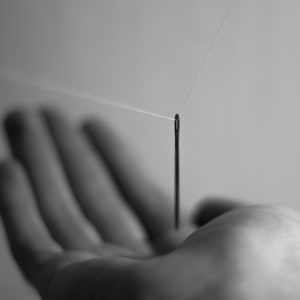 I suffer because my mind/brain is “designed” to try and solve internal problems the way it solves external ones. If your front door is jamming, you look at the problem, diagnose why the door is jamming, and then come up with a solution to fix it. The only problem is that internal, existential, emotional issues, don’t respond to our brains Jim-Will-Fix- It strategies in the same way. This is because the most sophisticated technology we have for “fixing” our internal problems or pain is with something called language! All those thoughts, beliefs, internal conversations and monologues, memories, beating ourselves up, threatening to beat others up, could not occur without language. We’re very particular in this way.
I suffer because my mind/brain is “designed” to try and solve internal problems the way it solves external ones. If your front door is jamming, you look at the problem, diagnose why the door is jamming, and then come up with a solution to fix it. The only problem is that internal, existential, emotional issues, don’t respond to our brains Jim-Will-Fix- It strategies in the same way. This is because the most sophisticated technology we have for “fixing” our internal problems or pain is with something called language! All those thoughts, beliefs, internal conversations and monologues, memories, beating ourselves up, threatening to beat others up, could not occur without language. We’re very particular in this way.
Which is why we are the only animals to suffer, but not the only animals to feel pain. When my dog Max is sick because he ate some human turd in the park (true story!), he feels pain. This is the same pain I would feel if I were to eat human turd in the park and be sick afterwards. But there is no suffering accompanying his retching and puking and shitting blood. He doesn’t beat himself up for having eaten the human turd. He doesn’t go into a twisted, blaming rant about the person who decided to defecate in the park rather than walk 500 metres to a toilets at Morrisons Supermarket. He doesn’t get angry at me for not watching him carefully enough, or at the person who relieved themselves under a tree. He feels pain, but there is absolutely no suffering. And when the pain of his mistake has passed, he is as happy as Larry. Bless him.
We however. are completely different animals. We feel the pain of the needle, the pain of someone not responding to a text message in the way we would have liked, the pain of not getting the job we wanted, the pain of having the job we have (if we’re unhappy at work), the pain of getting a low mark on an essay, the pain of seeing the people we want to go out with us swiping left, as well as the thousands of other painful situations, both large and small that fill our lives. And then, on top of that, our story-telling brains ladle a massive helping of Suffering just to make things feel proper awful. Even to the point where the original pain itself is miniscule compared to the ratio of suffering we’re experiencing after the fact.
Pain is crappy, but suffering can feel intolerable. I didn’t go to the dentist for seven years because whenever I thought of the pain of that little needle, I added a big dose of suffering-inducing, language-constructed mental activity, far far worse than the two second pain created by a Lidocaine jab. Instead, my brain fed me over those seven years hundreds if not thousands of excruciatingly painful thoughts, images, memories. All created with language. Here’s just a sample:
I hate needles. I can’t deal with needles. I hate them, and I can’t deal with them.
I can’t face going to the dentist.
Why was Dr Levin so insensitive to my needs when I was 8 years old!?!
Look at the trauma he has left me with! He has incapacitated me in this regard.
Doctors are so insensitive and uncaring. Dentists too. Fuckers.
I blame my mother for not recognising how traumatised I was by the experience.
Why can’t I just get on with it and be less sensitive, like Dad?
I’m such a fucking wuss. I should just man up.
I can’t believe I still haven’t gone to the dentist for a check-up. I’m useless at this stuff.
And here is a sample of the Suffering Images that played for seven years on my Internal YouTube Channel:
Gigantic syringes, gigantic needles, gigantic needles entering my sensitive wee gums, dentist not stopping when I yelp in pain, me yelping in pain, me embarrassing myself by yelping in pain, dentist thinking I’m a wuss for yelping in pain etc.
And that’s just a small sample of my suffering loop. Times that by 1000 and you’re just about getting close to the Hell Realm of me not going to the dentist for seven years. And that’s just the suffering I’m willing to share on a public website to prove my point. That’s just the tip of my iceberg needle. Because pain isn’t the problem. I’ve already proved to myself that I can tolerate a modicum of pain by digging my fingernail into the back of my hand, or the crook of arm. It’s suffering that’s driving me/you/anyone crazy!
Which means that if only we can, when in pain, separate out the pain from the suffering, we might be better placed to experience the unavoidable, inevitable pain of being alive, but without the extra lashings of suffering. That’s the best I think we can aim for: experiencing Pain as cleanly and uncomplicatedly as we can, but dialing back on Suffering! Especially as that’s the only dial we have access to.
Remember: Pain is unavoidable, inevitable (no dial for us to twiddle). Suffering: also somewhat inevitable because of our weird story-telling brains, but much more avoidable and diminishable.
Let’s now look at how to reduce psychological and physical suffering.
REDUCING YOUR SUFFERING: THE P.A.U.S.E.
 So how do we experience as “cleanly” as possible whatever dose of psychological or physical pain that is next coming our way without getting trapped into having a double dose of suffering alongside it? Here’s a five step process which is easy to do and remember. But it does require practice, until it becomes second nature. Which is where the acronym helps. P.A.U.S.E! P.A.U.S.E. stands for
So how do we experience as “cleanly” as possible whatever dose of psychological or physical pain that is next coming our way without getting trapped into having a double dose of suffering alongside it? Here’s a five step process which is easy to do and remember. But it does require practice, until it becomes second nature. Which is where the acronym helps. P.A.U.S.E! P.A.U.S.E. stands for
PAIN
ACKNOWLEDGING & ALLOWING FOR PAIN
UNDERSTANDING/UNMET NEEDS
SUFFERING
ENGAGING WITH OUR PAIN
P.A.U.S.E. STEP ONE: P stands for PAIN!
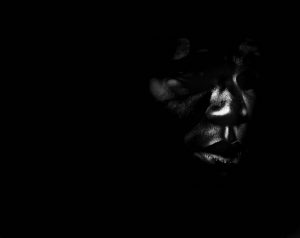 Think of something a situation or a conversation you had with someone, or just something ongoing in your life that is causing you pain. Make a note of your pain on a piece of paper or on your phone.
Think of something a situation or a conversation you had with someone, or just something ongoing in your life that is causing you pain. Make a note of your pain on a piece of paper or on your phone.
Here are some examples:
PAIN: Gavin said in a text message that he doesn’t want to see me at the moment.
PAIN: My back’s really hurting at the moment.
PAIN: I haven’t done any work today, just faffed around.
PAIN: I feel like my life isn’t going anywhere.
PAIN: Yesterday I ate too many carbs and sugary things and today I’m feeling like a beached whale.
P.A.U.S.E. STEP TWO: A stands for ACKNOWLEDGING & ALLOWING!
 In this step, you set the intention to allow yourself to feel some of this pain without reaching for the jar of suffering to start slathering all extra pain on top. Think for a moment how willing are you right now (out of 10) to just experience the pain as it is, without any additional thoughts, analysis, or “stories” about the pain?
In this step, you set the intention to allow yourself to feel some of this pain without reaching for the jar of suffering to start slathering all extra pain on top. Think for a moment how willing are you right now (out of 10) to just experience the pain as it is, without any additional thoughts, analysis, or “stories” about the pain?
Don’t feel bad if you discover that your willingness is only about 1/10, as this will also give you an indicator of how strong the pain is, as well as how tenacious our story-telling brains are when it comes to adding lots of thoughts, images, and explanations about our pain.
We also need to consider that when we are in a lot of pain, and especially if we are very sensitive, our default FIGHT-FLIGHT-FREEZE stress response kicks almost instantaneously, and so we might find ourselves invariably fighting the pain with lots of extra thoughts, internal monologues/rants (FIGHT-STUFF), or just trying to get away from the pain by either numbing or distracting ourselves, or telling ourselves even more stories about the individuals or world that has triggered this pain in us (FLIGHT-STUFF). Sometimes we also freeze up entirely, unable to think or do anything, caught in the pain like a rabbit in the headlamps (FREEZE-STUFF).
So let’s try and not do that, just for a few minutes.
See if you can turn up the dial on your willingness to experience the pain, even just for the five minutes it takes you to do this exercise. Being willing to experience pain without moving into lots of thoughts, analysis, or story about the pain is an incredibly hard thing to do because our brains are designed to respond to pain in the way that brains always respond (via language), but it is also a courageous and wise thing to do as it gives us a chance, even if just for a minute or two, to just take in and process our pain. Before our brains turn it into a Suffering Extravaganza.
So maybe at this point, give yourself a little pat on the back for gently taking offline (to some extent) your highly resistant, won’t shut-up-about-it, default fight-flight-freeze nervous system and storytelling brain, so that you can give all of of your compassionate and available attention to this horrible pain. This is the first step to becoming your own therapist who is there to help you process painful events in your life 24/7. It may take a couple of years of practice, but this is where it all starts.
P.A.U.S.E. STEP THREE: U stands for UNDERSTANDING/UNMET NEEDS
 In step three, you offer understanding and compassion to yourself for why you are feeling this way. It’s a tricky step, because often the “why” can take our brains into a place where either we blame others or ourselves. This is why we focus on Unmet Needs in this step (another “U”), because 99.99% of the time, these unmet needs lie at the core of our pain. In fact, I’m so confident of the fact that ALL our psychological and physical pain stems from Unmet Needs that if you can find a painful event in your consciousness that isn’t connected to an Unmet Need, I’ll give you £100.
In step three, you offer understanding and compassion to yourself for why you are feeling this way. It’s a tricky step, because often the “why” can take our brains into a place where either we blame others or ourselves. This is why we focus on Unmet Needs in this step (another “U”), because 99.99% of the time, these unmet needs lie at the core of our pain. In fact, I’m so confident of the fact that ALL our psychological and physical pain stems from Unmet Needs that if you can find a painful event in your consciousness that isn’t connected to an Unmet Need, I’ll give you £100.
So come back to the sentence you wrote, and see if you can find the unmet need from this list of core needs:
- The need for CERTAINTY and COMFORT: our need to feel in control and to know what’s coming next so we can feel secure. This is also the need for basic comfort, the need to avoid pain and stress, and also to create pleasure and stimulation (physical, mental) for ourselves.
- The need for UNCERTAINTY and VARIETY: paradoxically we also need things to be different at times, for there to be surprises in our life (but maybe not too many, and not painful ones, even if unavoidable!)
- The need for SIGNIFICANCE: is my life meaningful to me, and am I meaningful to other people?
- The need for LOVE and CONNECTION: am I being appreciated, acknowledged, understood, valued by those people I care about. Am I being heard? Are people making space for my self-expression, hearing me out in a way that feels supportive and kind?
- The need for GROWTH and CONTRIBUTION: am I growing, emotionally, spiritually, intellectually? Am I able in some way to contribute to other people’s growth and well-being, or to the world in what I say or do?
Invariably your pain will be connected to an Unmet Need, and you can make a note of that underneath your pain.
PAIN: Gavin said in a text message that doesn’t want to see me at the moment.
UNMET NEED: need to be appreciated, accepted understood by others (LOVE and CONNECTION)
PAIN: My back’s really hurting at the moment
UNMET NEED: the need for certainty and physical comfort
PAIN: I haven’t done any work today, just faffed around
UNMET NEED: the need for SIGNIFICANCE and meaning, also GROWTH and CONTRIBUTION
PAIN: I feel like my life isn’t going anywhere
UNMET NEED: The need for SIGNIFICANCE, GROWTH and CONTRIBUTION
PAIN: Yesterday I ate too many carbs and sugary things and today I’m feeling like a beached whale
UNMET NEED: the need for certainty and physical comfort
If you can’t find the unmet need that is foundational to your pain, ask yourself this question: “What do I need at the moment? What would make me feel better? That is often a way of discovering your Unmet Need.”
When you have found the Unmet Need that is shining a particularly glaring spotlight on your pain, this is also a good time to see if you can find a little self-compassion for your pain-afflicted self. Maybe just calling to mind the notion that because these needs are universal (we all have them), the fact that you are in pain at the moment is invariably because this need is not being met. And that is COMPLETELY understandable and OK. IT’S NOT YOUR FAULT (no matter what your Inner Critic tells you). You might even want to say that to yourself a couple of times: “It’s not my fault for feeling this pain. It’s really not my fault.” I would also be in pain if that need was not being met for me, and so would that person who perhaps triggered your pain, if the pain stems from a relational issue, as many of our painful moments do.
Often when we are in pain, the pain can be accompanied by a strong Inner Critic who tells us that we shouldn’t be feeling this way, that it is our fault, or that there’s something wrong with us for being so uptight about whatever we’re struggling with. Pausing to focus on Unmet Needs can help us to see that our pain is not only natural and normal, but that it is wholly unavoidable and inevitable. If a need is not met, there will invariably be pain of some sort. And if you are a sensitive person, there will probably be EVEN MORE PAIN. This is just a law of our (human) universe rather than some deficiency in you, or some blameworthy lack in the person or thing that triggered your pain. IT’S NOT YOUR FAULT. Really. It isn’t.
P.A.U.S.E. STEP FOUR: S stands for SUFFERING!
 Now here’s the fun part. Ish.
Now here’s the fun part. Ish.
Sit back and watch (mindfully, jotting down on the same piece of paper) the ways in which your Storytelling Brain begins to fill your head and heart with Suffering Thoughts, Suffering Internal Monologues and Conversations; Suffering Images, Suffering Memories, even Suffering Intentions (which is to say: intentions to do something that will probably just cause us more suffering).
PAIN: Gavin said in a text message that doesn’t want to see me at the moment.
UNMET NEED: need to be appreciated, accepted understood by others (LOVE and CONNECTION)
SUFFERING: How could he be so cruel? Doesn’t he realise what this is going to do to me? (SUFFERING THOUGHT); “I can’t believe you’re doing this! After all the times I’ve been there for you! After all the kindness and care, and consideration I’ve shown towards you and your struggles, and you shut down like this when I’m now struggling (SUFFERING INTERNAL MONOLOGUE/CONVO); Him Just Getting On With His Day, Laughing, Having Fun, Not Even Sparing Me A Single Thought (SUFFERING IMAGE); the two of us connecting and getting on (SUFFERING MEMORY); “Well fuck him, I’m going email him and tell him what I think about him. Or maybe I’ll just let him stew – don’t respond, stop engaging with him” (SUFFERING INTENTION).
Here’s another one:
PAIN: My back’s really hurting at the moment
UNMET NEED: the need for CERTAINTY and COMFORT
SUFFERING: Why me? What have I done to deserve this? There are people in their eighties who are relatively free from pain – it’s so unfair (SUFFERING THOUGHT); “You want me to sit with this?!? You want me to sit like a little Buddha and just focus on the sensations in my body?!? YOU SIT WITH IT!” (SUFFERING INTERNAL MONOLOGUE/CONVO WITH THERAPIST/FRIEND/MEDITATION TEACHER); Pain Driving Me To The Point Where I Just Go Crazy and Throw Myself Off Hornsey Lane Bridge (SUFFERING IMAGE); remembering myself pain-free, without a care in the world (SUFFERING MEMORY); If I don’t have some let up from this constant pain, I’m going to throw myself off Hornsey Lane Bridge! (SUFFERING INTENTION).
Once you’ve done this for a while with a particular painful event you will notice that your suffering thoughts, images, internal conversations, and intentions have a somewhat limited repertoire. This is because the intrinsic plots of our storytelling brain are really just a series of variations on a theme. What is important in this step of the P.A.U.S.E. is to intervene in some way with the the Suffering Thought, Internal Conversation, Image, Memory, or Intention, and not just let it continue to loop itself over and over again, going deeper and deeper into the Suffering Story until you are well and truly suffering. Instead: make a simple note of what your brain is doing (“Ah, Suffering Thought…Ah, Suffering Internal Conversation…Ah Suffering Image…Ah, Suffering Memory…Ah, Suffering Intention – thank you brain.”)
And then. Stop.
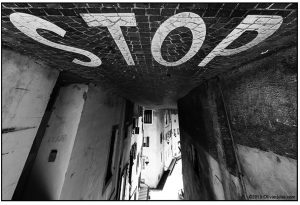 Of course your brain will probably ignore you and keep on spinning its stories. So you then make another gentle note of how the invitation to suffer is being delivered in the shape of a THOUGHT, an IMAGE/VIDEO, an INTERNAL CONVERSATION or MONOLOGUE, a MEMORY, or INTENTION, and then once again, you say: ENOUGH! STOP!
Of course your brain will probably ignore you and keep on spinning its stories. So you then make another gentle note of how the invitation to suffer is being delivered in the shape of a THOUGHT, an IMAGE/VIDEO, an INTERNAL CONVERSATION or MONOLOGUE, a MEMORY, or INTENTION, and then once again, you say: ENOUGH! STOP!
You don’t need to be harsh or hard on yourself, but just willing to interrupt yourself (your brain) in the way that you are able to interrupt (if you choose) someone who is relentlessly bombarding you with THOUGHTS or IMAGES or INTERNAL CONVERSATIONS, or MEMORIES, or INTENTIONS that are making you suffer. If all of that stuff was being pumped out of your television set and you were getting no joy or pleasure from it, you would switch it off. We can’t switch off our brains, but we can interrupt whatever is being broadcast to us.
You can devise your own way of doing this, or we can talk more about it together. I quite like to use the word “stop” or “enough”. So if you were a fly on the wall, you would hear me talking to my brain like this:
“Ah, suffering Thought! Stop!…………Ah, that’s now a suffering image, enough! …….. Suffering Monologue, stop! Focus on the pain. What’s the Unmet Need? Feel that pain, just that. ………Suffering Monologue. Enough! Ah, now a Memory. Suffering. Enough.”
 Sometimes, when my brain is really set on suffering, and I’m doing something which doesn’t require my full attention, so that my brain can focus entirely on the suffering story, I might need to note and say stop/enough again and again and again. The STOP is especially important when our Suffering Minds are trying to get us to carry out some Actions (revenge, rebuttal, rehash). A Suffering Mind is so skilled at finding ways to convince us that writing an angry email or text will really help us to suffer less, that often, before we know it, we end up doing the very thing that will only make us suffer more. In my experience, lashing out and blaming another human being for the ways they have triggered in me pain, only makes me suffer more. Because then I have to deal with either the anxiety of how they will respond, or the unpleasantness of their defensive words, or whatever their Suffering Brain spins the story to try and make it better for themselves.
Sometimes, when my brain is really set on suffering, and I’m doing something which doesn’t require my full attention, so that my brain can focus entirely on the suffering story, I might need to note and say stop/enough again and again and again. The STOP is especially important when our Suffering Minds are trying to get us to carry out some Actions (revenge, rebuttal, rehash). A Suffering Mind is so skilled at finding ways to convince us that writing an angry email or text will really help us to suffer less, that often, before we know it, we end up doing the very thing that will only make us suffer more. In my experience, lashing out and blaming another human being for the ways they have triggered in me pain, only makes me suffer more. Because then I have to deal with either the anxiety of how they will respond, or the unpleasantness of their defensive words, or whatever their Suffering Brain spins the story to try and make it better for themselves.
Of course your brain might obstinately refuse to stop suffering. And that’s fine too. Because as long as you are aware that you are having a Suffering Thought, a Suffering Image, a Suffering Internal Conversation/Monologue, Memory, or Intention, you are winning. Because you are at that moment making a distinction between Pain which is inevitable/unavoidable, and Suffering which is not. At the moment in which you ask or demand of your brain to stop making you suffer, you are shifting into a place where you are once again in control of your brain, rather than the other way around, even if it continues to pump out Suffering Thoughts, Images, Internal Conversations, Memories and Intentions. Simply doing the P.A.U.S.E again and again and again, will eventually reduce suffering. I promise.
But you’ll also need to give some time to the final step, which is:
P.A.U.S.E. STEP FIVE: E is for ENGAGING WITH LIFE

Once we have made space for inevitable/unavoidable Pain, but also respectfully told the Suffering Word Machines that we call “our brains/minds” to stop overloading us in a mistaken belief that it can “fix” our pain, it’s time to engage with something out there in the real world that feels meaningful to us. This also sends an important message to our Suffering Minds that there is life beyond Suffering in some shape or form, nudging it to note the tangible differences between outer experience (life) and our inner-world of images, memories, thoughts, beliefs (i.e. LANGUAGE).
What might this engagement with life look like?
1) Getting On With Value-Driven Activities
All this involves is doing something that is meaningful and has value to you, whilst at the same time being willing to have your Brain/Mind playing the Suffering Channel in the background. So for example, you might go for a walk with our Suffering Mind, or write an article for our website with your Suffering Mind droning on in the background, or do some Yoga with Adriene with your Suffering Minds occasionally interrupting Adriene’s instructions for Side-Reclining Leg Lift with suffering thoughts, images, and internal monologues.
2) Getting On With Healthy(ish) Distractions
Similar to the above but perhaps involving more Netflix binges, Amazon Wish-List making, and tidying or cleaning. Loads more examples here: https://wiredforhappy.com/100-smart-ways-to-calm-your-anxious-mind/
3) Go Back, with Open Arms, To Your Pain:
Perhaps you’ve done all of these things, and still the pain of your Unmet Need is hurting you a great deal. Returning to that hurt, with self-validation and understanding (“Anyone would be feeling this pain if the core need for X wasn’t met! It’s not my fault!”) and going right back to the P of the P.A.U.S.E is a great, and sometimes necessary thing to do.
Maybe you haven’t given your heart and your head enough time to fully take in just how painful this upset is. So don’t see it as a failure if you maybe need to do the whole P.A.U.S.E. process a number of times, perhaps even with the same material. Eventually, the pain will become more manageable, and the suffering will reduce. I promise this will happen. But it does require consistency and working that P.A.U.S.E.
Looking forward to hearing how you get on with it.





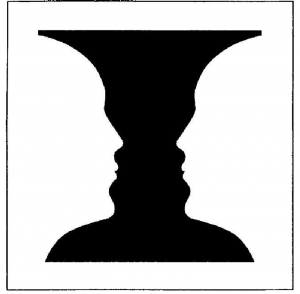


 In many ways, I love being the butt of someone’s joke, I love to be duped and fooled. Love magic tricks, especially of the Derren Brown variety that always reveal something profound to us about ourselves and others. As well as entertaining us in the process of fooling us.
In many ways, I love being the butt of someone’s joke, I love to be duped and fooled. Love magic tricks, especially of the Derren Brown variety that always reveal something profound to us about ourselves and others. As well as entertaining us in the process of fooling us. 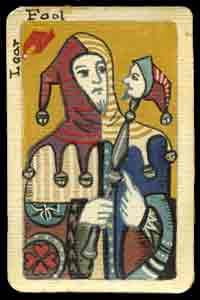 But the ultimate April Fool is the fool our minds make of us on a daily basis. Never out of pure malice – for how can a lump of meat, the brain, sitting between our ears bear malice towards us? Rather, as a function of their problem-solving, pleasure-seeking, pain-avoiding programming. Every time my mind tells me that the reason so-and-so didn’t respond to my text message is because a) they don’t care about me or what I’ve written to them, or b) they don’t fundamentally like me, or whatever other narrative they come up with, and I buy into that and suffer. Again:
But the ultimate April Fool is the fool our minds make of us on a daily basis. Never out of pure malice – for how can a lump of meat, the brain, sitting between our ears bear malice towards us? Rather, as a function of their problem-solving, pleasure-seeking, pain-avoiding programming. Every time my mind tells me that the reason so-and-so didn’t respond to my text message is because a) they don’t care about me or what I’ve written to them, or b) they don’t fundamentally like me, or whatever other narrative they come up with, and I buy into that and suffer. Again: 
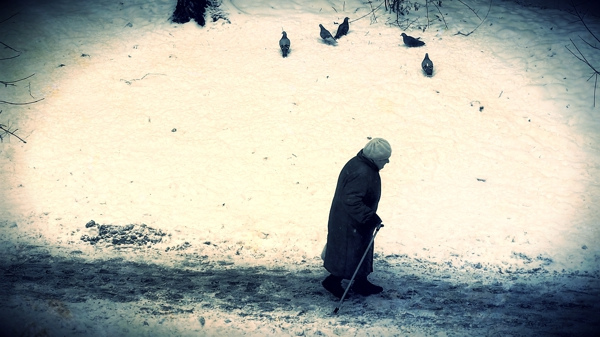
 When were feeling bad and wanting to feel better, perhaps the most important distinction we can make for ourselves is in keeping clear the difference between pain and suffering. The difference can be summarised in the following adage which you may have come across at some point:
When were feeling bad and wanting to feel better, perhaps the most important distinction we can make for ourselves is in keeping clear the difference between pain and suffering. The difference can be summarised in the following adage which you may have come across at some point:  Maybe an example will help. I hate needles. I’m probably not alone in this, but at times this aversion has verged on a kind of phobia. And like any phobia, it has often got in the way of me doing the things I need to do to take care of myself. Like going to the dentist for regular check-ups. In fact, I didn’t go to the dentist from 2010-2017, because…I hate needles! Following on from that rule I’ve set for myself (Thou shall hate needles!) I didn’t go to the dentist until the pain of toothache overcame my unwillingness to tolerate the pain of a needle being pushed into my gums.
Maybe an example will help. I hate needles. I’m probably not alone in this, but at times this aversion has verged on a kind of phobia. And like any phobia, it has often got in the way of me doing the things I need to do to take care of myself. Like going to the dentist for regular check-ups. In fact, I didn’t go to the dentist from 2010-2017, because…I hate needles! Following on from that rule I’ve set for myself (Thou shall hate needles!) I didn’t go to the dentist until the pain of toothache overcame my unwillingness to tolerate the pain of a needle being pushed into my gums.  Let’s look at how suffering works. My problem with needles is, if I really think carefully about it, a Suffering Problem, rather than a pain one.
Let’s look at how suffering works. My problem with needles is, if I really think carefully about it, a Suffering Problem, rather than a pain one. Here’s how I suffer, and perhaps this is how you suffer too. I take the pain of your dismissal, the pain of you not being sensitive to my anxiety, of not validating me and my issues with needles, and I add stuff to that. The stuff I add (often unconsciously) is Suffering.
Here’s how I suffer, and perhaps this is how you suffer too. I take the pain of your dismissal, the pain of you not being sensitive to my anxiety, of not validating me and my issues with needles, and I add stuff to that. The stuff I add (often unconsciously) is Suffering.  I suffer because my mind/brain is “designed” to try and solve internal problems the way it solves external ones. If your front door is jamming, you look at the problem, diagnose why the door is jamming, and then come up with a solution to fix it. The only problem is that internal, existential, emotional issues, don’t respond to our brains Jim-Will-Fix- It strategies in the same way. This is because the most sophisticated technology we have for “fixing” our internal problems or pain is with something called language! All those thoughts, beliefs, internal conversations and monologues, memories, beating ourselves up, threatening to beat others up, could not occur without language. We’re very particular in this way.
I suffer because my mind/brain is “designed” to try and solve internal problems the way it solves external ones. If your front door is jamming, you look at the problem, diagnose why the door is jamming, and then come up with a solution to fix it. The only problem is that internal, existential, emotional issues, don’t respond to our brains Jim-Will-Fix- It strategies in the same way. This is because the most sophisticated technology we have for “fixing” our internal problems or pain is with something called language! All those thoughts, beliefs, internal conversations and monologues, memories, beating ourselves up, threatening to beat others up, could not occur without language. We’re very particular in this way.  So how do we experience as “cleanly” as possible whatever dose of psychological or physical pain that is next coming our way without getting trapped into having a double dose of suffering alongside it? Here’s a five step process which is easy to do and remember. But it does require practice, until it becomes second nature. Which is where the acronym helps.
So how do we experience as “cleanly” as possible whatever dose of psychological or physical pain that is next coming our way without getting trapped into having a double dose of suffering alongside it? Here’s a five step process which is easy to do and remember. But it does require practice, until it becomes second nature. Which is where the acronym helps.  Think of something a situation or a conversation you had with someone, or just something ongoing in your life that is causing you pain. Make a note of your pain on a piece of paper or on your phone.
Think of something a situation or a conversation you had with someone, or just something ongoing in your life that is causing you pain. Make a note of your pain on a piece of paper or on your phone.  In this step, you set the intention to allow yourself to feel some of this pain without reaching for the jar of suffering to start slathering all extra pain on top. Think for a moment how willing are you right now (out of 10) to just experience the pain as it is, without any additional thoughts, analysis, or “stories” about the pain?
In this step, you set the intention to allow yourself to feel some of this pain without reaching for the jar of suffering to start slathering all extra pain on top. Think for a moment how willing are you right now (out of 10) to just experience the pain as it is, without any additional thoughts, analysis, or “stories” about the pain? In step three, you offer understanding and compassion to yourself for
In step three, you offer understanding and compassion to yourself for  Of course your brain will probably ignore you and keep on spinning its stories. So you then make another gentle note of how the invitation to suffer is being delivered in the shape of a THOUGHT, an IMAGE/VIDEO, an INTERNAL CONVERSATION or MONOLOGUE, a MEMORY, or INTENTION, and then once again, you say: ENOUGH! STOP!
Of course your brain will probably ignore you and keep on spinning its stories. So you then make another gentle note of how the invitation to suffer is being delivered in the shape of a THOUGHT, an IMAGE/VIDEO, an INTERNAL CONVERSATION or MONOLOGUE, a MEMORY, or INTENTION, and then once again, you say: ENOUGH! STOP! Sometimes, when my brain is really set on suffering, and I’m doing something which doesn’t require my full attention, so that my brain can focus entirely on the suffering story, I might need to note and say stop/enough again and again and again. The STOP is especially important when our Suffering Minds are trying to get us to carry out some Actions (revenge, rebuttal, rehash). A Suffering Mind is so skilled at finding ways to convince us that writing an angry email or text will really help us to suffer less, that often, before we know it, we end up doing the very thing that will only make us suffer more. In my experience, lashing out and blaming another human being for the ways they have triggered in me pain, only makes me suffer more. Because then I have to deal with either the anxiety of how they will respond, or the unpleasantness of their defensive words, or whatever their Suffering Brain spins the story to try and make it better for themselves.
Sometimes, when my brain is really set on suffering, and I’m doing something which doesn’t require my full attention, so that my brain can focus entirely on the suffering story, I might need to note and say stop/enough again and again and again. The STOP is especially important when our Suffering Minds are trying to get us to carry out some Actions (revenge, rebuttal, rehash). A Suffering Mind is so skilled at finding ways to convince us that writing an angry email or text will really help us to suffer less, that often, before we know it, we end up doing the very thing that will only make us suffer more. In my experience, lashing out and blaming another human being for the ways they have triggered in me pain, only makes me suffer more. Because then I have to deal with either the anxiety of how they will respond, or the unpleasantness of their defensive words, or whatever their Suffering Brain spins the story to try and make it better for themselves. 

 There’s a wonderful poem by Mary Oliver where she talks about pain, suffering, and our relation to it.
There’s a wonderful poem by Mary Oliver where she talks about pain, suffering, and our relation to it. If you kick a dog, it will yelp and run away. If you kick it regularly, any sign of your arrival eventually will produce fear and avoidance behavior in the dog by means of the process called “conditioning.” But so long as you are out of the picture and are not likely to arrive, the dog is unlikely to feel or show significant anxiety. People are quite different. As young as sixteen months or even earlier, human infants learn that if an object has a name, the name refers to the object. So what, you might say?
If you kick a dog, it will yelp and run away. If you kick it regularly, any sign of your arrival eventually will produce fear and avoidance behavior in the dog by means of the process called “conditioning.” But so long as you are out of the picture and are not likely to arrive, the dog is unlikely to feel or show significant anxiety. People are quite different. As young as sixteen months or even earlier, human infants learn that if an object has a name, the name refers to the object. So what, you might say? Psychological pain hurts, by definition. But it does more than that. Often pain holds you back from living the kind of life you want to live. There is no question that a person with a panic disorder would rather not experience the feeling of extreme fear, because it is so unpleasant. But that discomfort is compounded by the fact that the panic seemingly gets in the way of living itself.
Psychological pain hurts, by definition. But it does more than that. Often pain holds you back from living the kind of life you want to live. There is no question that a person with a panic disorder would rather not experience the feeling of extreme fear, because it is so unpleasant. But that discomfort is compounded by the fact that the panic seemingly gets in the way of living itself.